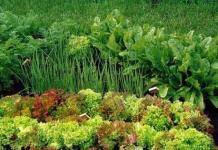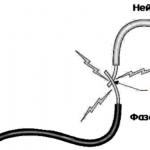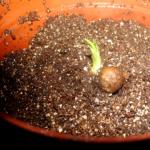Experienced summer residents know well that planting vegetables in the same place for several years in a row is taboo. Each vegetable absorbs from the soil substances that are necessary for its full development. Next year, their reserves are exhausted, which leads to a reduction in yield and the production of small fruits. To avoid such a problem, it is necessary to carry out crop rotation of vegetable crops annually.
It is important to pay special attention to choosing a new place for vegetables. You also need to find out which predecessors are not prohibited. Today's article will touch on the topic of onions. What can be planted after this vegetable and whose place can it take?
All vegetable crops need the same nutrients. If you plant them in the same bed every year, the soil will be depleted. Due to mineral deficiency, the site will be unsuitable for growing other crops. It will not be possible to save the situation by applying fertilizing in one season, since the infertile land will slowly replenish its reserves. It will take about 2-3 years to restore its nutritional properties.
Moreover, if you plant a vegetable in the same bed, there will be an accumulation of pathogenic bacteria and pest larvae in the soil to which it is susceptible. Thus, the bed will become contaminated, which will negatively affect the new crops planted. Their root system will be destroyed.
In addition, the risk of allelopathy in plants should not be excluded. There are many root systems in the soil that are in constant contact. Each root has certain chemicals. For one plant crop the neighborhood will be beneficial, but for another it will be disastrous. For example, if you plant cabbage near celery, the latter will protect it from whites.
What to plant after onions next year?
Almost every gardener grows onions. This culture is famous for its beneficial properties, so it must be included in your diet. When the onion harvest is completed, gardeners may be puzzled by the question of what to plant in its place. The beds where this vegetable was previously located are fed with potassium fertilizers. They ensure good growth of bulbs and make the soil slightly saturated, so it is not suitable for all vegetables.
Read also:
Onions and garlic: Everything gardeners need to know
Strawberry
Strawberries respond well to a slightly alkaline environment, so their bushes will grow well in the bed that was previously occupied by onions. Tomatoes, cucumbers and legumes are considered bad neighbors for this berry. Raspberries and blackberries pose a great danger to strawberries. These crops can infect it with the strawberry mite. Parsley and garlic will provide reliable protection against slugs that attack strawberries in wet weather.
Strawberry "Victoria"
The space previously occupied by onions can be left for planting strawberries. To protect it from weevils, do not plant potatoes and tomatoes near it. The best company for this berry would be cabbage, carrots, radishes, spinach and garlic. One bed with strawberries can also be occupied by parsley and calendula. These plants will protect it from nematodes that eat the roots.
Beetroot and carrots
Next year, beets and carrots may take the place of onions. Plants will actively stimulate growth if tomatoes, beans, peas, and spinach grow nearby. Undesirable neighbors for carrots and beets are potatoes, anise, corn, parsley and celery. If the beds with them are located next to each other, the root crops will turn out to be modest in size.
Cucumbers and tomatoes
You can get a generous harvest the next year, after harvesting the onions. Before planting a vegetable by seedlings or seeds, you need to add mineral fertilizers to the ground. Beets and onions are ideal as neighbors.
Cabbage and pumpkin
You can maintain crop rotation using cabbage and pumpkin. These vegetables thrive in the space that previously belonged to onions. Moreover, they will not experience an acute need for nutrients, since the earth will still be saturated with them. However, in order for the fruits to turn out large, you will still have to apply fertilizers to the soil. Carrots, garlic, and tomatoes will be ideal neighbors for cabbage and pumpkin.
Is it possible to plant garlic instead of onions?
Crops such as onions and garlic require the same nutrients. The length of their rhizomes is the same, so it is worth choosing other predecessors for garlic. It is advisable to plant it in beds where the following vegetables grow: tomatoes, zucchini, cucumbers. Cereals and garden crops are also welcome. But potatoes, eggplant, radishes and carrots will not allow the garlic cloves to gain vitality, which will negatively affect the yield.
Read also:
Here's what you can plant in the garden after harvesting winter garlic
Planting vegetables after onions in July
If early ripening onions were planted in the garden bed, this means that harvesting can begin in mid-summer. To ensure that the space in the dacha is not empty, it can be occupied by the following vegetable crops: peas, green beans, ultra-ripe cabbage, beets, radishes, carrots. At the end of September, vegetables planted in July will be rewarded with a generous harvest. It is worth noting that they cannot be stored for a long time, so they must be consumed immediately.
Important! Vegetables that were sown in July are less susceptible to various diseases and pest attacks.
What to plant after onions in August
After the onions are harvested at the end of summer, greens can take their place. Namely: dill, parsley, celery. All of them will definitely delight you with an excellent harvest. If you sow their seeds in an area that was previously occupied by onions, within a week you will be able to observe the first shoots.
Radishes will also definitely appreciate such a predecessor - by the end of October you will be able to collect juicy root vegetables. A table that details predecessors and successors will help you adhere to the rules of crop rotation.
Green manure
If mid-season or late-season onions were grown at the dacha, harvesting can begin at the end of August or beginning of September. The period of night frosts will soon begin, so it will not be possible to plant a new crop after the onions are harvested. To saturate the soil with useful substances and establish crop rotation, you can use green manure, which in everyday life is called “green doctors”. Their planting will allow:
- prevent weeds from appearing;
- fertilize the soil;
- fight pest larvae and pathogenic bacteria, which in turn will ensure cleansing and disinfection of the soil;
- carry out good loosening of the soil due to strong roots.
For each site you need to select a specific green manure. This plant is classified into 5 varieties. The cruciferous family saturates the soil with phosphorus, sulfur, and organic matter, and protects plant crops from wireworms, root rot, and nematodes.
The Asteraceae family is a source of complex, difficult to decompose organic fibers. Cereals will help fill the soil with potassium, nitrogen and organic matter. Buckwheat will saturate the soil with the same microelements as cereals.
Important! When choosing green manure for onions, special attention should be paid to the cabbage family.
How does crop rotation occur in the field?
Growing bulbs in an open field is not an easy process. Experienced summer residents take into account all the features of this troublesome task, so they soon manage to reap a good harvest.
To get a good harvest of any agricultural crop, including winter onions, it is not enough to follow the planting dates and care rules. Poorly selected neighboring plants or predecessors can harm the vegetable. And some cultures, on the contrary, will have a beneficial effect on its development.
The best predecessors of winter onions
It is better to plant onions before winter after those crops that loosen the soil and saturate it with useful substances. These are usually green manures:
- mustard;
- rape;
- phacelia;
- Vika;
- peas;
- beans;
- any grains (except oats).
It is believed that root crops, which include onions, are best grown after crops with a root system that goes deep into the ground - predecessors can also be selected using this principle
However, you can also plant onions in beds freed from the following vegetables:
- tomatoes;
- salad;
- cucumbers;
- any cabbage.
- corn.
Winter onions can also be planted after radishes, carrots and beets, if the harvest of these crops was harvested before the end of July.
It is often advised to plant onions after potatoes, but this can lead to damage by nematodes or wireworms. We can conclude that if there are problems with these pests on the site, it is better to choose another place for winter planting. If nematodes and wireworms are not noticed, feel free to plant onions after potatoes.
There are many different crop rotation schemes, for example, a three-year cycle - leafy vegetables are grown in the same bed one year, fruit-bearing vegetables the second, and root vegetables the third
After which you can’t plant onions
- oats;
- celery;
- radishes;
- beans;
- parsley;
- celery;
- alfalfa;
- red clover.
Other features of crop rotation
You can plant winter onions in the beds where the crop grew in summer if there are no other options. But only if it grew in one place for no more than two years. This point should be calculated - if, for example, in the fall of 2016, onions were first planted in the garden bed before winter and grew continuously there in the future, in the fall of 2018 you need to find another place. In this case, it will be possible to replant onions there only after 4 years. This is also true for other plants of the Allium family: garlic, wild garlic, chives, leeks and other species.
Crops belonging to the Onion family have the same pests and need the same soil microelements, so they should not be grown in one place for too long
The rules of crop rotation are associated with soil depletion, because each crop takes certain substances from the ground. Also of great importance are pests that breed in large numbers next to specific plants, depending on their “specialization.”
Carrots are a good choice as a neighbor to winter onions; they can also be planted before winter.
Following the rules of crop rotation for winter onions will help you get a high-quality harvest next year and protect the plant from diseases and pests.
Outdoor activities are a very common activity in our country. Not a single delicious dish is complete without this spicy vegetable, and its juice is used for medicinal purposes. Like every plant, onions require certain care and watering. Having an idea about this crop, you can grow a healthy vegetable. Let's figure out what to plant onions after, and how to do it correctly.
Varieties of culture
Suitable vegetables are grown in different climates. Before planting onions, you need to find out all the nuances of the temperature regime. Some crops are designed for areas with harsh conditions. Other plants grow well in dry climates. Amateur gardeners know some of the most popular Photos confirm the differences between cultures even by their appearance.
Onion varieties:
Bulb is one of the most famous species.
Chives - used in many dishes. Frost-resistant variety, mainly grown in the North Caucasus. The leaves throw out new feathers very early, requiring constant plucking for greening.
Multi-tiered - this variety stands out among others for its bactericidal properties. Withstands slight frosts and has an interesting appearance. The leaves of the plant grow in several rows.
Slime onion - this species gets its name from the fact that when a leaf is cut, a lot of mucus is released. The vegetable is very useful for people who suffer from anemia. It has a delicate taste and garlic aroma.
Leeks - just like slime onions, have a weak taste and are rich in various vitamins.
Shallot is a vegetable with a sweet and sour taste, which, like others, contains a number of useful substances: ascorbic acid and phytoncides. They are very useful for the human body.
Mongolian - the culture has healing properties. It has beautiful flowering and is grown on a windowsill. Doctors recommend using this for cancer.
Healing properties
All varieties of onions contain a number of useful substances - calcium and fluorine, iron and sulfur, essential oils and vitamins A, B, C, flavonoids. The vegetable has long been used for colds and infectious diseases. Onion juice is dropped into the nose. Eating a spicy vegetable stimulates blood circulation and digestion.

Onions have a positive effect on people who suffer from diabetes and hemorrhoids, gastritis and hypertension. It also stimulates potency and helps get rid of general weakness of the body.
In folk medicine, not only onion juice is used, but also gruel. This mass helps prevent hair loss, removes calluses and tames itching from mosquito bites.
It is also used for cosmetic purposes. Masks are made from it to cleanse and soften the skin.
Proper planting of onion sets
Each crop requires special care. Planting onions is not that difficult, you just need to have an idea of the technology of this process.

The vegetable is unpretentious to environmental conditions. But the yield and size of the vegetable will depend on how correctly we plant onions.
The spicy crop is grown in several ways. You can buy onion seeds or sets. What is it? These are small bulbs that are grown from first year seeds. This sowing practice is often used in central Russia.
So, let's plant onion sets! Initially, we weed the plot of land on which the spicy vegetable will grow. Then you need to make beds, the distance between them should be at least thirty centimeters. After that you can safely. Do not forget that you need to maintain a ten-centimeter distance between the bulbs. They should not be pushed into the ground; it is best to make small holes with a garden shovel and lower the planting material there to a depth of about 2 cm. The top of the onion should be left on the surface of the ground.
Preparation, disembarkation and care
It is necessary to properly store and process planting material. The seedlings are planted as early as possible, this ensures rapid and high-quality development of the root system and leaf growth.

The onions are thoroughly inspected beforehand, and rotten and damaged planting material is discarded. They also cut off all the sore spots of the sowing and place it in water heated to 25-30 degrees. The planting material should lie in the liquid for about two days. When the roots appear, the onion sets can be planted in open ground. After completing this process, it would be good to mulch the beds with humus.
The crop does not require frequent watering; in the first month of plant growth, it needs to be watered twice. The depth of soil wetting should be up to ten centimeters. In the first two to three weeks of onion set growth, it is worth keeping an eye on it. If the culture is developing poorly, then it is better to make a solution from bird droppings and feed the culture.
Preparing the soil for onions
The best soil for a spicy vegetable is neutral. Acidic soil should be diluted with chalk or Calculation: 250 grams of mixture per square meter of bed. In the fall, before the onset of frost, it is better to spill the soil with water. In winter, the area where onions are planned to be planted must be cleared of snow. This approach promotes better soil freezing, which will allow the soil to get rid of diseases and pests.

When spring comes, you need to apply fertilizer to the site. After digging, the earth is leveled with a rake. It is also advisable to pour a solution of copper sulfate onto it (1 teaspoon per 10 liters of water). This will help disinfect the soil. After preparation, the soil should be covered with oilcloth or film for a week.
Onion care
The second year of planting already produces larger fruits. This type of onion is called a turnip. Already in the third year of planting, you can get inflorescences from the crop, and then seeds. Growing onions does not take much effort and time. The main thing in this process is possession of the necessary information. If you know how to plant onions and how to care for the plant, you can avoid harmful diseases and get a rich harvest.

Throughout the entire growth period, turnip onions need to be regularly watered, loosened, weeded, cultivated and fed the soil. The spicy vegetable requires proper care all season long. In May and June (when it is especially very hot), the crop should be constantly watered (every seven days, 8-10 liters of water per square meter). July typically brings drier weather. Therefore, the frequency of watering increases (twice every ten days, about five liters of water per square meter).
Treatment and feeding
To grow a spicy vegetable, you need to constantly monitor its development. Typically, two or three feedings are carried out for turnip onions. The first time enrichment with useful substances is done when they notice the slow development of the plant, and also if the feathers are not breaking through well. A glass of bird droppings is diluted in ten liters of water, and the soil is watered with this solution. The second time feeding is carried out two weeks after the first. The solution is made as follows: two tablespoons of nitrophoska are dissolved in ten liters of water. The third feeding is carried out when the bulb reaches three to four centimeters in diameter. Solution: dilute two tablespoons of superphosphate in ten liters of liquid.

Processing of onions is carried out so that the plant does not suffer from fungal infections. When the leaf of the crop grows to twenty centimeters, it is necessary to treat it with a solution of copper sulfate and soap (the plant itself is sprayed) for prevention.
Then plant onions
It has long been proven that in nature there is compatibility and incompatibility of cultures. Onions will grow better if you know about their “favorite” predecessors. In addition, you can plant “neighbors” that will ward off pests and diseases. So, why should you plant onions? Favorable predecessors are parsley and dill, celery, potatoes and cabbage.
In the beds themselves, carrots will have a beneficial effect on the growth of onions. They mutually protect each other from harmful flies. Onions also take place next to watercress and radishes, cucumbers and beets, strawberries and tomatoes.
Some summer residents are surprised that when planting one crop in the same place, the yield decreases every year. The earth is “tired” of homogeneous plants. To avoid this, you should alternate vegetables, then the soil is not depleted, but is saturated with useful substances and microelements. It is necessary to tell in detail what can be planted after onions as the most common early ripening plant in vegetable gardens.

Crop rotation rules
There are several reasons why you should stick to crop rotation.


Basic rules to follow.
- There are plants that can only be planted in one place for a year - these are tomatoes, potatoes, strawberries and beans. We alternate the remaining types every 3 years.
- It is possible to return the crop to the garden bed if you plant green manure in front of it. They will clean the soil and saturate it with useful substances.
- You should not alternate plants from the same family.
- Crops with different root systems should be grown. For example, onions and carrots, since their roots are at different levels.
If you follow these rules, you can regularly get a good harvest of onions and other vegetables and maintain soil fertility.


Suitable options
Gardeners with extensive experience plan in advance how to fill the garden bed for the next season. If you previously had onions growing in your garden, then it is better to plant the listed crops after them.
- The first and most suitable are carrots and beets. Together with onions, they are the best neighbors in the garden. They complement each other perfectly, and they are not afraid of pests, because these crops have the ability to scare them away from each other.
- Tomatoes. These vegetables do well in place of onions. But in order for the harvest to be good, it is recommended to fertilize the soil before planting.
- Can be planted cucumbers These vegetables constantly require new soil. When planted after onions, it gets along well in the soil and brings a large harvest. Planting these vegetables together is practiced.



- Strawberry. It takes root well in the place where there was previously an onion. The soil for this plant is characterized by a slightly alkaline environment, just like for onions, and the substances and beneficial microelements left behind by the bulbs will provide strawberries with good yield.
- Cabbage and radishes. Good rotational crops that get along well after others. It is these plants that hardly deplete the soil.


- Pepper is also a good option.
- Eggplant. However, this plant can only be grown for one season on one soil. Then it will be possible to plant it there only after 2 years.
Onions are planted in the spring and harvested quite early, and you should never leave the bed without a crop. Some people prefer to plant radishes and lettuce - a great solution for unoccupied space. But there are late varieties that ripen in late autumn, so there is an assumption that there will not be enough time for a full harvest to ripen.


In summer, after collection
Typically, onions ripen by mid-summer and are removed from the garden. After this, gardeners ask themselves the question: “What is better to plant in this place before the fall? " This is an important question, because the plant on the site must have time to ripen before frost. Vegetables that are unpretentious to weather conditions and resistant to cold should be planted. There are options to plant early ripening varieties, then your harvest will be ready in September.
- Salads. They can be planted throughout the summer with a gap of 10-15 days.
- Cabbage. There are early ripening varieties that can be planted in July. Just be sure to moisten the soil before sowing.
- Green beans or peas. It is recommended to use bush varieties of green beans when planting. They grow into a small bush with fruits that ripen at the same time.
- Radish. It can be planted in August and get juicy root crops.



Next year
Suitable options for vegetables that can be planted after the onion have been sorted out. It should also be noted those types of plants after which onions can be planted for the next season. Firstly, it is very important that the soil for planting is located on a well-lit side (under the sun); it should contain many nutrients such as potassium and phosphorus. Tomatoes, pumpkins, cabbage, peas and green manure are the best crops to plant bulbs after.
Gardeners plant onions at the beginning of spring or at the end, but you can do this in July, in which case the soil after harvesting new potatoes is ideal.
Novice gardeners are often interested in the question: “Is it possible to plant garlic together with onions or after each other? " This is a very controversial answer. One half of experienced vegetable growers claim that garlic, due to its unusual smell, drives away pests. The second part believes that these two crops feed on the same substances, therefore, there will be a lack of nutrition and the fruits will be small.


Green manure
In order to fill the soil with useful substances, while improving the structure, many summer residents choose plants such as green manure. These are special crops that normalize the condition of the soil. As green manure grows and develops, it saturates the soil with nitrogen and suppresses weeds.
Green manures include green plants that grow quickly. Thanks to their impressive root system, the weeds do not receive sufficient nutrition and do not grow. These plants are annual, their roots rot quite quickly and many channels appear through which the soil is saturated with moisture and oxygen.
You can sow green manure throughout the season, but it is best to do this before planting the main crop. Before planting onions, it is recommended to sow precisely those varieties of plants that enrich the soil with minerals and penetrate into its deeper layers.

There are the following types of green manure:
- yellow lupine (nourishes the soil with nitrogen and has fairly large roots);
- vetch (also supplies the soil with nitrogen);
- field peas (tolerates climates with low temperatures, sown in March, can be used on medium and heavy soils);
- rye (can be sown together with vetch, usually in September, prevents the growth of weeds);
- garden bean (not suitable for planting peas, beans and other legumes);
- turnips (suitable for growing onions; can be sown in spring).

In addition, there are other reasons for the impossibility of alternating them.
- Vegetables will lack essential nutrients because their roots absorb food equally quickly.
- These crops have the same pests and diseases. It is recommended to plant a plant that is resistant to the previous disease.

However, after garlic, it is best to plant dill; it will have time to please you with a harvest the same year.
The benefits of joint plantings
Naturally, the first advantage of joint planting is saving space in the garden bed, while getting more yield. Properly selected crops that grow together have a beneficial effect on each other and release mutually beneficial organic substances. There are additional positive aspects.
- Mixed beds are a principle of natural farming, with the help of which it becomes possible not to use chemical fertilizers and get a tasty and healthy harvest.
- Thanks to proper planning of planting in the garden, you get a good harvest throughout the season.
- Soil depletion is prevented by planting crops with different nutritional requirements.
- Decorative, beautiful flowering in the garden.
- Reducing the likelihood of plant damage by pests and unpleasant diseases.

Each culture plays its role. There are main and accompanying (additional) cultures. The first creates a favorable environment and protects the bed from weeds and drying out. The second can be flowers, herbs, green manure, as well as various vegetables.

It is better to plant one that ripens slowly as the main crop, and an early ripening one as an additional crop. This is done so that while one grows up, there is time to collect the second and free up more space for the development of the main crop. The main thing is not to make a mistake in the correct combination of the two types.
The technology for proper crop rotation is shown in the video below.
Well, the time to harvest winter onions is approaching. The question on the agenda is not an idle one: what to plant next, because summer is still in full swing. The choice depends on the climatic zone - it is clear that the Krasnodar Territory and the Moscow Region have different conditions. Crop rotation rules should also be taken into account.
Let's go through the list:
- Salad crops. They are always needed on the table. These are both fresh vitamins and a decoration for meat and fish main courses. Pay attention to the back of the package, there must be the inscription: “suitable for summer sowing.” For many varieties and hybrids, the length of daylight hours is of particular importance.
- Feel free to plant early-ripening cabbage varieties. Ultra-ripe hybrids are better suited for the middle zone. Grow them without seedlings, sowing seeds directly into the ground. With the right agricultural technology, by the middle - end of September you will collect young heads of cabbage. They are not suitable for long-term storage, but for current fresh consumption and pickling they are an excellent option.
- Peas and green beans. We live in central Russia and in 2016 we almost didn’t succeed in replanting peas. The bushes grew powerful, with a large number of pods, but the blades did not have time to fill before the cold weather arrived. First, the peas stopped growing, and then frost killed them. A maximum of 2 weeks of heat was not enough. We replanted regular peas, and you choose early-ripening varieties so as not to repeat our mistakes
- Carrots and beets are traditional crops that are usually planted after onions the following year. But if you want to get tender root vegetables for beetroot or stew in September - October, then feel free to plant these vegetables immediately after the onions. The situation is the same as with cabbage - such a crop is not intended for long-term storage.
- Radish (or daikon) is a traditional Russian vegetable that grows remarkably well after planting in July. Onions, like cucumbers, are one of the best predecessors for this crop. Try to plant the seeds not very deep so that they germinate faster. Do not forget that the root vegetables will be quite large in size, so keep the distance in the row from 20 to 30 cm.
- Radish - this crop is sensitive to day length. It is better to plant it after the onion not immediately, but closer to mid-August. In this case, the radishes will not shoot and will give an excellent harvest.
- Don't forget about dill. These spicy greens will be good on any table, especially in the fall, when the season is over.


























